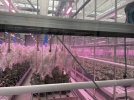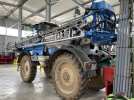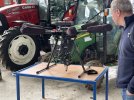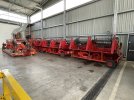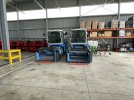FIAT 450
Well-Known Member
Seed, plastic, sprays and pay for the sowing. Sell back on a tonnage bases. That way you can weigh the loads. Normally maize will average 21 ton probably a shade more per ac. Be careful going into a lay field due to wireworm. Slurry and nitrogen after that.Ive just been approached by a Dairy farmer who wants me to grow him 30 acres of maize under plastic .
Will i miss out on the payment ??
And also given the steep input bill for maize what sort of upfront deposit should i ask for ??
I got well scalded before with beet when the purchaser reneged so growing anything you cant put across a merchants weighbridge makes me wary ...
All input appreciated
Thanks in advance .

